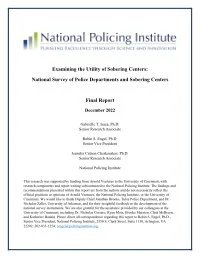By P. Jeffrey Brantingham and Craig D. Uchida
Calls-for-service represent the most basic form of public cooperation with the police. How cooperation varies as a function of instances of police activity remains an open question. The great situational diversity of police activity in the field, matching the situational diversity of crime and disorder, makes it challenging to estimate causal effects. Here we use homicides as an indicator for the occurrence of a standardized set of highly visible, socially-intensive, acute police investigative activities and examine whether police calls-for-service change in response. We adopt a place-based difference-in-differences approach that controls for local fixed affects and common temporal trends. Estimates of the model using data from Los Angeles in 2019 shows that calls-for-service increase significantly in the week following a homicide. The effect pertains to both violent crime and quality of life calls for service. Partitioning the data by race-ethnicity shows that calls-for-service increase most when the homicide victim is Black. Partitioning the data by race-ethnicity and type of homicide shows that some types of calls are suppressed when the homicide is gang-related. The results point to opportunities for police to build trust in the immediate aftermath of homicides, when the public is reaching out for greater assistance.
Journal of Criminal Justice, 73:2021.





















